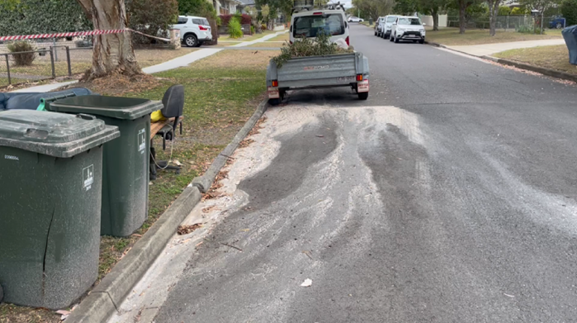Asbestos cement roofs are particularly concerning as they are in the poorest condition, having been directly exposed to years of sun, wind, rain and hail, as well as more frequent disaster events. Heavy rains can wash fibres into guttering, contaminating surrounding areas.
As asbestos roofs age, they also become brittle, increasing the risk of breakage and even collapse.


It is illegal in every state of Australia to use high pressure water spray or compressed air on asbestos materials. It is also illegal to use power tools or other equipment such as brooms on asbestos-containing materials in an uncontrolled manner, as this also releases asbestos fibres into the air.
In recent years there have been numerous incidents where property owners have tried to clean their asbestos roofs using high pressure water, leading to extensive contamination that has cost hundreds of thousand dollars to rectify and heavy fines for the persons undertaking the work.
The asbestos fibres released by cleaning activities often end up also contaminating neighbours’ properties, vegetation and soil surrounding the property, public footpaths, roads and stormwater systems.
Incidents have also occurred where individuals have fallen through or off asbestos roofs while undertaking maintenance work.


Click on the state or territory that you live in to find out about the rules that apply to asbestos roofs, as well as helpful guidance on how to identify and manage other asbestos materials.
Asbestos cement roof hotspots
In 2021 ASSEA completed a residential asbestos roof hotspot mapping project which targeted 56 areas of interest across Australia, covering 770 km2.
Within these areas approximately 13,000 buildings with asbestos roofing were identified using a combination of high-resolution aerial imagery and artificial intelligence, amounting to around 23,000 tonnes or 1.4 million square metres of residential asbestos roofing – equivalent to 213 football fields.
In this study, target areas in the NT, ACT and Tasmania did not reveal significant amounts of asbestos roofing and were excluded from further analysis.
For more information, view the asbestos roof hotspot maps:
Note – Factsheets were current as at November 2021.


